
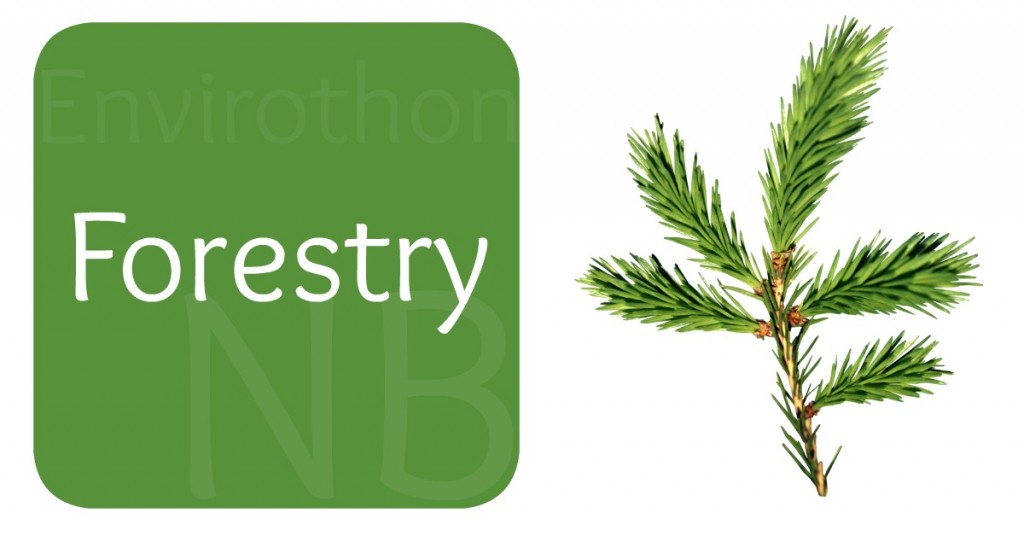
Humans rely on the biodiversity of forests for many services, including timber for homes, wood pulp for paper, biochemical models for future medications, recreation, aesthetic beauty, and countless others. A good understanding of plant biology, forest ecology, and human impacts to these ecosystems will help to inform good management practices to conserve these areas for future generations.
Forestry Learning Objectives
Resources
- Forestry Study Guide – For Middle Schools Curriculums

- Feb 17, 2024 Forestry Workshop Slides
Video Resources
- Tree Physiology and Tree Identification
- Forest Management
- Forest Measurements
- Forest Health
Practice Questions
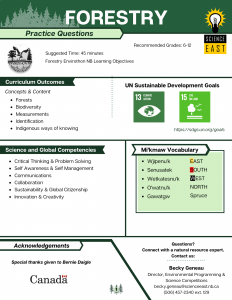
Download Envirothon NB Forestry Practice Questions
LEARNING OBJECTIVES

Forestry in New Brunswick
Knowledge of the history of forestry in New Brunswick, land tenures, New Brunswick forestry statistics, legislation and regulations, forest certification, and the duty to consult with Aboriginal Peoples.
Forestry in Canada
Knowledge of Canadian forestry statistics, land tenures, our changing forest, and sustainability of Canadian forests.
Tree Physiology and Tree Identification
Know the parts and tissues of a tree, twig, and leaf and be able to explain how a tree grows. Know what dendrochronology is and how it can be used to understand past environmental conditions. Understand the processes of photosynthesis and respiration and be able to identify common tree species without a key, and identify specific or unusual trees using a key.
- Softwood key for trees of the Acadian (Wabanaki) Forest
- Hardwood key for trees of the Acadian (Wabanaki) Forest
- Tree Identification
![]() Tree Physiology Video – Virtual Workshop
Tree Physiology Video – Virtual Workshop

Forest Ecology
Knowledge of the typical crown classes of trees and of the Forest Regions of Canada, particularly the Acadian Forest Region and the Boreal Forest Region. Understand forest ecology concepts and factors affecting them, including forest succession, shade tolerance, forest soils, forest fires, and the ecosystem services that our forests provide.
Forest Management
Understand the various silvicultural treatments associated with reforestation, stand improvement, stand regeneration, and harvesting in even-aged and uneven-aged forest management systems and the types of products that our forests provide.
![]() Forest Management Video – Virtual Workshop
Forest Management Video – Virtual Workshop
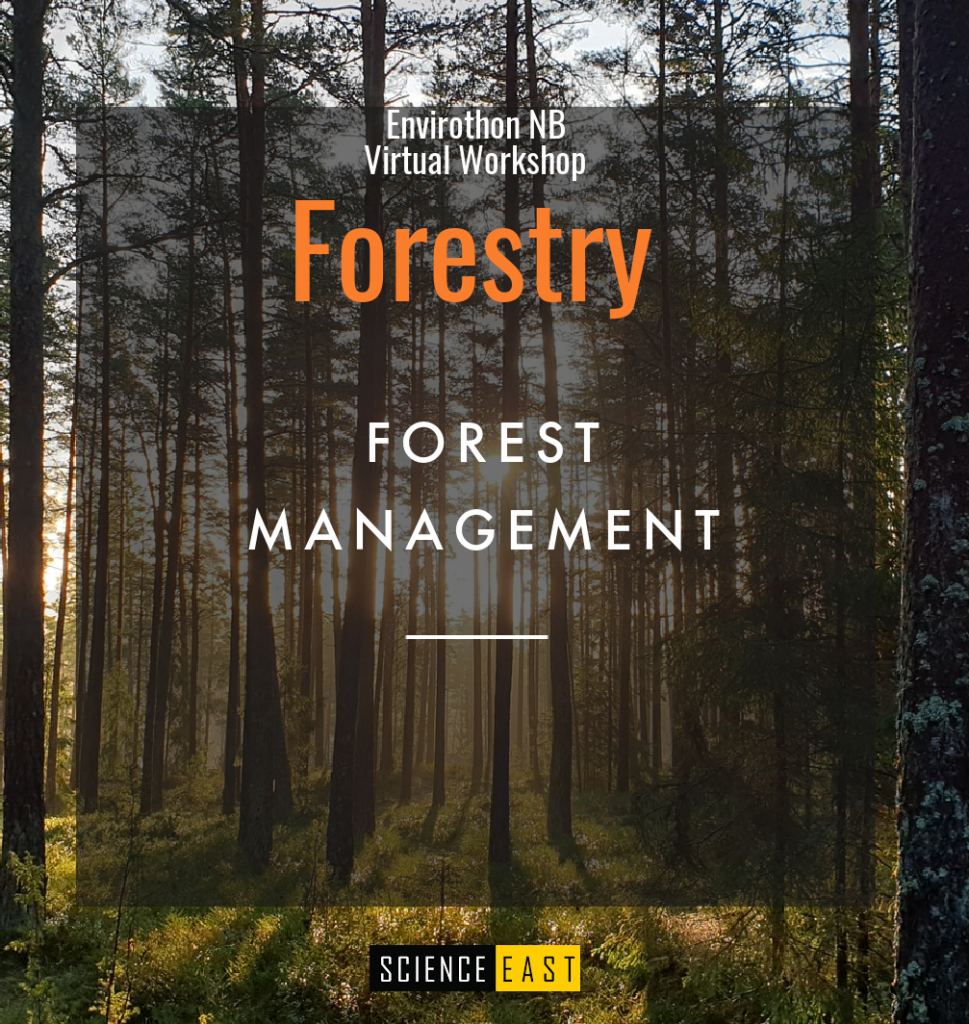
Forest Measurements
Be able to recognize some basic features on aerial photographs and know how to determine distances and area on aerial photographs. Knowledge of how to use forestry tools and equipment to measure tree age, diameter, and height as well as stand measurements of density, basal area, and stocking. Knowledge of LiDAR technology and how it is used in enhanced forest inventory in New Brunswick.
![]() Forest Measurement Video – Virtual Workshop
Forest Measurement Video – Virtual Workshop
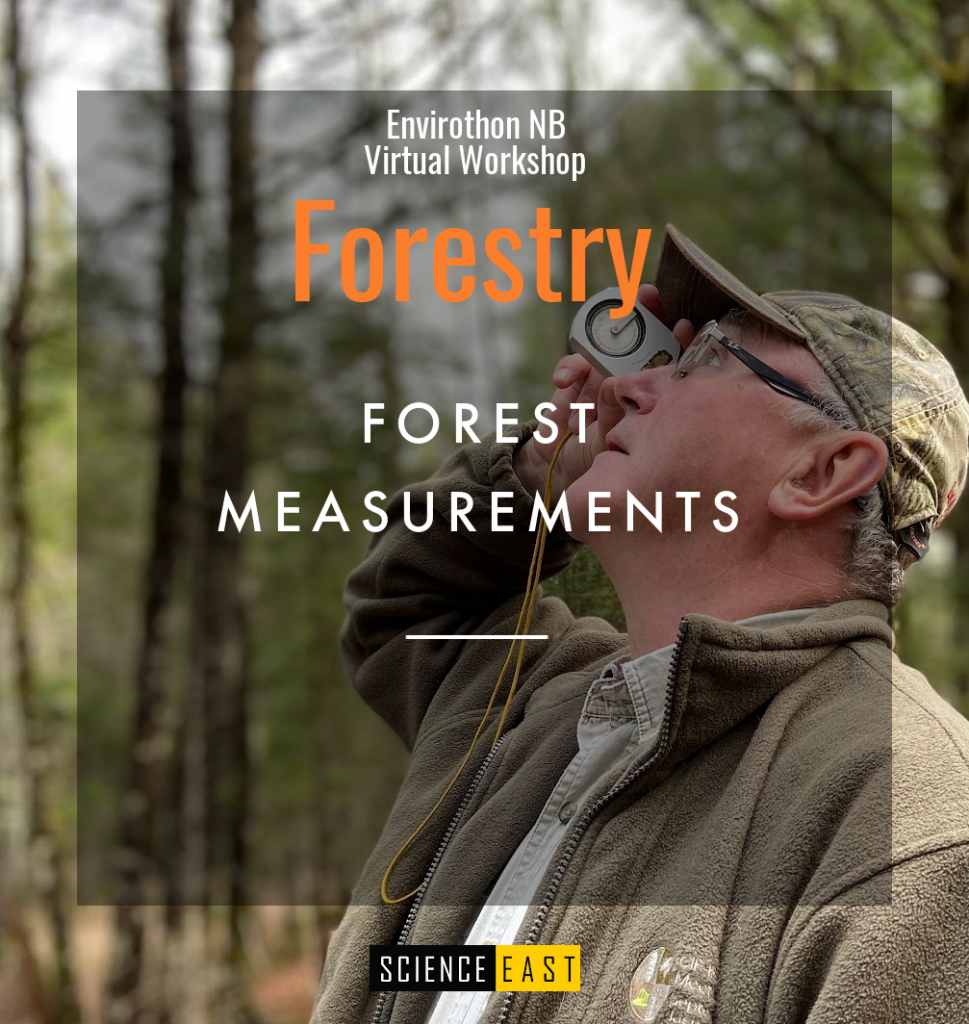
Forest Health
Identify the abiotic and biotic factors in a forest ecosystem, and understand how these factors affect tree growth and forest development. Consider factors such as climate, insects, microorganisms, and wildlife.
![]() Forest Health Video – Virtual Workshop
Forest Health Video – Virtual Workshop
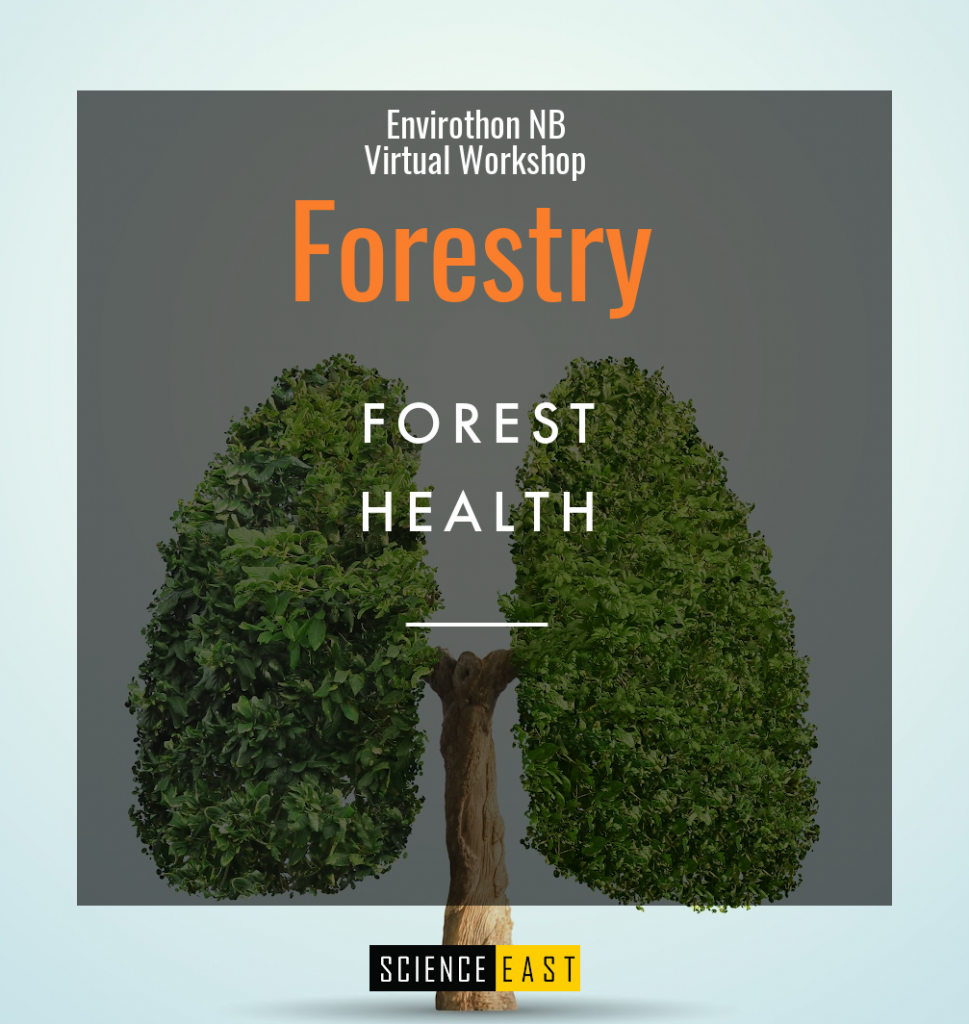
Climate Change and Canada’s Forests
Knowledge of the impacts of climate change on Canada’s forests.